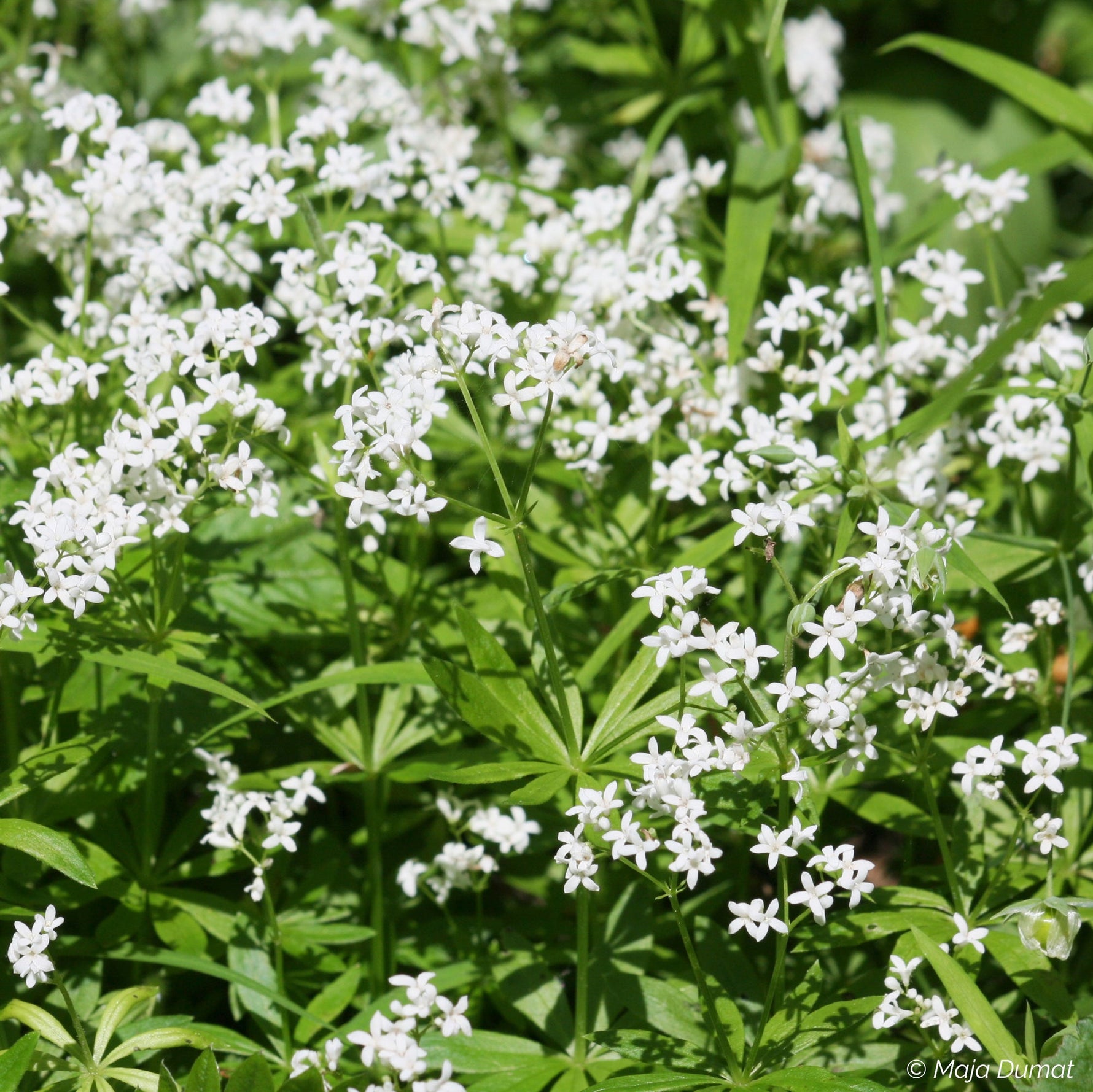
Dharaseeds
Sweet Woodruff
Estimated delivery between April 15 and April 18.
Sweet Woodruff (Galium odoratum)
Overview
Sweet Woodruff is a charming perennial plant, well-known for its fragrant, star-shaped white flowers and aromatic, dark green foliage. Often used as a ground cover or in woodland gardens, this plant thrives in shaded areas and can also be used in floral arrangements or potpourri. Sweet Woodruff is appreciated for its ability to create a lush, green carpet beneath trees or shrubs, adding texture and fragrance to the garden.
Key Benefits
- Fragrant Flowers: Sweet Woodruff produces sweet-smelling white flowers in spring, known for their fresh scent, which is often used in homemade potpourri.
- Ground Cover: Perfect for filling shady spots, it provides an attractive, low-maintenance ground cover that prevents soil erosion.
- Attracts Pollinators: The small, white flowers attract pollinators such as bees and butterflies, making it a great addition to eco-friendly gardens.
- Low Maintenance: Requires minimal care, thriving in shaded or partially shaded areas, and tolerates a variety of soil types.
Plant Characteristics
- Foliage: Dark green leaves arranged in whorls around the stem, giving the plant a soft, dense appearance.
- Flowers: Tiny white flowers grouped in clusters, blooming in late spring to early summer, emitting a sweet, pleasant fragrance.
- Growth Habit: Low-growing and spreading, forming a dense mat that works well as a ground cover.
- Height: Typically grows 6–12 inches (15–30 cm) tall, spreading up to 18 inches (45 cm).
Planting Instructions
Planting Season:
Sweet Woodruff is best planted in early spring or fall. It thrives in cooler, shaded areas, making it perfect for planting in temperate regions.
Planting Details:
- Seed Depth: Plant seeds approximately ¼ inch (0.6 cm) deep.
- Spacing: Space plants 6–12 inches apart to allow for spreading.
- Soil Requirements: Prefers moist, well-drained soil, with a slightly acidic to neutral pH (6.0–7.5).
- Sunlight: Prefers partial to full shade but can tolerate some morning sun.
Care Instructions
Watering:
Sweet Woodruff requires consistent moisture, especially in dry spells. Ensure the soil is kept moist but not waterlogged for optimal growth.
Fertilization:
Fertilizing is not usually necessary; however, applying a balanced, slow-release fertilizer in spring can support growth if your soil is nutrient-deficient.
Weeding and Mulching:
Mulch around the base of the plant to retain moisture, suppress weeds, and keep the soil temperature stable.
Pest and Disease Control:
Sweet Woodruff is generally pest-resistant, though it can occasionally attract aphids. It is also resistant to most common plant diseases but should be spaced properly for air circulation to prevent mildew.
Harvesting:
Sweet Woodruff can be harvested for its aromatic leaves and flowers. For potpourri or crafting, collect the flowers when in full bloom, and dry them in a well-ventilated area.
Culinary Uses:
- Herbal Tea: The leaves can be dried and used to make a fragrant herbal tea.
- Floral Arrangements: The fragrant flowers add a lovely touch to bouquets and floral arrangements.
Conclusion
Sweet Woodruff is a versatile, low-maintenance perennial that thrives in shady garden areas. Its fragrant blooms and lush green foliage make it a fantastic ground cover or companion plant in shaded garden beds. With its ease of care and unique appeal, Sweet Woodruff is a beautiful addition to any garden, providing both visual and aromatic interest throughout the growing season.








